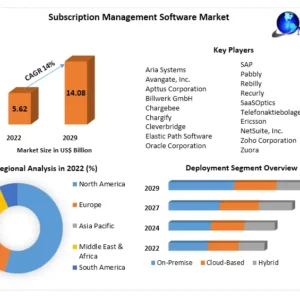Moonshot thinking is all about setting extremely ambitious goals that push the boundaries of what is possible. To support and implement this innovative mindset effectively, organizations can leverage a variety of tools and frameworks. These resources help facilitate the creative processes, strategic planning, and collaborative efforts necessary for achieving extraordinary results. Here are some of the key tools and frameworks that support moonshot thinking:
1. Design Thinking
Overview
Design thinking is a human-centered approach to innovation that emphasizes understanding users’ needs, rapid prototyping, and iterative testing. This methodology is particularly effective for moonshot thinking because it encourages empathy, creativity, and collaboration.
Key Phases
- Empathize: Understand the needs, behaviors, and experiences of the users.
- Define: Clearly articulate the problem to be solved.
- Ideate: Generate a wide range of creative solutions.
- Prototype: Build tangible models of selected ideas.
- Test: Gather feedback and refine the prototypes.
Tools
- Journey Mapping: Visualize the user’s experience.
- Brainstorming Sessions: Encourage free-thinking and idea generation.
- Rapid Prototyping Tools: Tools like Sketch, InVision, or Figma.
2. Agile Methodology
Overview
Agile is a flexible and iterative approach to project management and product development. It emphasizes collaboration, customer feedback, and small, rapid releases. Agile’s adaptability and focus on continuous improvement make it an excellent framework for supporting moonshot thinking.
Key Principles
- Iterative Development: Build and improve products in small, incremental steps.
- Collaborative Effort: Involve cross-functional teams in the development process.
- Customer Feedback: Regularly gather and incorporate customer feedback.
Tools
- Scrum Boards: Tools like Trello or Jira to manage tasks and workflows.
- Kanban Boards: Visualize work in progress and optimize flow.
- Sprint Planning: Plan and execute short, focused work periods.
3. Lean Startup
Overview
The Lean Startup methodology focuses on creating and managing startups or projects by developing products that customers want, using as few resources as possible. It is built on the principles of validated learning, experimentation, and iterative product releases.
Key Concepts
- Build-Measure-Learn Loop: Continuously improve the product based on user feedback.
- Minimum Viable Product (MVP): Create a basic version of the product to test assumptions quickly.
- Validated Learning: Use data and experiments to validate product hypotheses.
Tools
- Business Model Canvas: Visualize and develop business models.
- Customer Development Interviews: Gather insights directly from potential customers.
- A/B Testing Platforms: Tools like Optimizely or Google Optimize for testing product variations.
4. Blue Ocean Strategy
Overview
Blue Ocean Strategy is a framework for creating uncontested market space and making competition irrelevant. It involves finding new demand and creating innovative products or services that open up new markets.
Key Components
- Value Innovation: Focus on both differentiation and low cost.
- Strategy Canvas: Visualize the current state of play in the market.
- Four Actions Framework: Eliminate, Reduce, Raise, and Create to reconstruct market boundaries.
Tools
- Strategy Canvas: Plot value curves and identify strategic opportunities.
- ERRC Grid: Identify which factors to Eliminate, Reduce, Raise, and Create.
- Buyer Utility Map: Understand how to deliver exceptional utility to buyers.
5. Scenario Planning
Overview
Scenario planning is a strategic planning method used to make flexible long-term plans. It involves imagining different future scenarios and developing strategies to navigate them. This approach helps organizations prepare for uncertainty and identify potential opportunities for innovation.
Key Steps
- Identify Key Drivers: Determine the forces that will impact the future.
- Develop Scenarios: Create detailed narratives of possible future states.
- Analyze Implications: Assess the impact of each scenario on the organization.
- Develop Strategies: Formulate strategies to respond to each scenario.
Tools
- Scenario Matrices: Visualize different future scenarios based on key uncertainties.
- Impact Analysis: Evaluate the potential impact of different scenarios.
- Strategic Roadmaps: Develop plans to navigate various future outcomes.
6. TRIZ (Theory of Inventive Problem Solving)
Overview
TRIZ is a problem-solving, analysis, and forecasting tool derived from studying patterns of invention in the global patent literature. It provides a systematic approach to understanding and solving complex problems.
Key Principles
- Contradiction Matrix: Identify and solve contradictions in the system.
- 40 Inventive Principles: Apply these principles to generate innovative solutions.
- Trends of Evolution: Predict how systems will evolve over time.
Tools
- Contradiction Matrix: Identify and resolve conflicting requirements.
- Inventive Principles Database: Access principles and examples for innovation.
- Ideation Tools: Software like Goldfire Innovator for problem-solving.
7. Innovation Labs and Hackathons
Overview
Innovation labs and hackathons are structured environments designed to foster creativity and rapid prototyping. They provide dedicated space and time for teams to focus on generating and testing new ideas.
Key Components
- Focused Timeframe: Short, intense periods dedicated to innovation.
- Cross-Functional Teams: Diverse teams collaborating on innovative projects.
- Rapid Prototyping: Quickly developing and testing new concepts.
Tools
- Collaboration Platforms: Tools like Slack or Microsoft Teams for communication.
- Prototyping Software: Tools like Tinkercad or Arduino for hardware prototypes.
- Idea Management Platforms: Tools like IdeaScale or Spigit to manage and develop ideas.
Conclusion
Moonshot thinking requires a blend of creativity, strategic planning, and practical execution. Leveraging the right tools and frameworks can significantly enhance an organization’s ability to set and achieve ambitious goals. Design thinking, agile methodology, lean startup, blue ocean strategy, scenario planning, TRIZ, and innovation labs are some of the most effective approaches to support moonshot thinking. By integrating these tools and frameworks into their processes, organizations can foster a culture of innovation, overcome challenges, and achieve transformative results. Embrace these practices to unlock the full potential of moonshot thinking and drive groundbreaking advancements.



